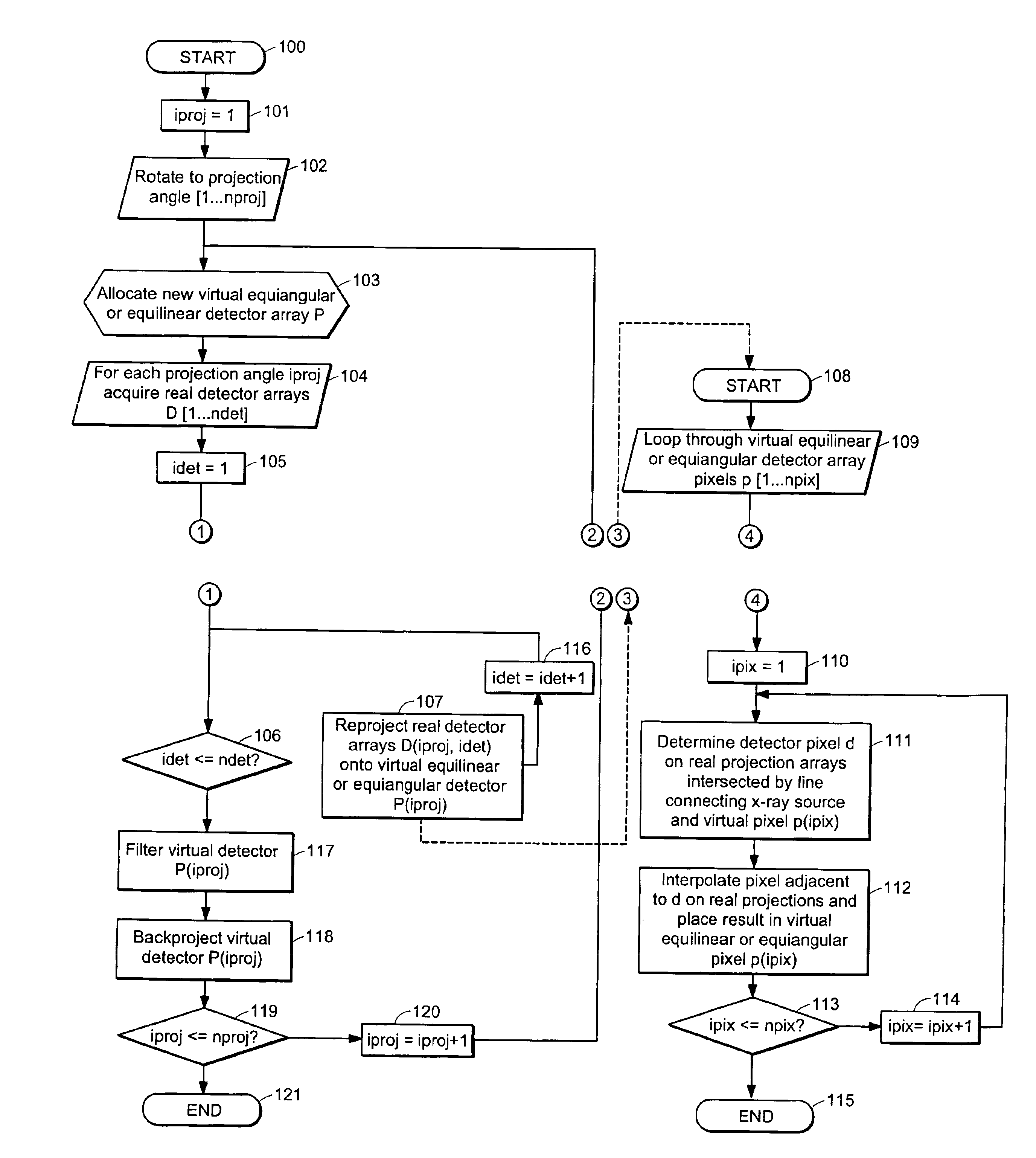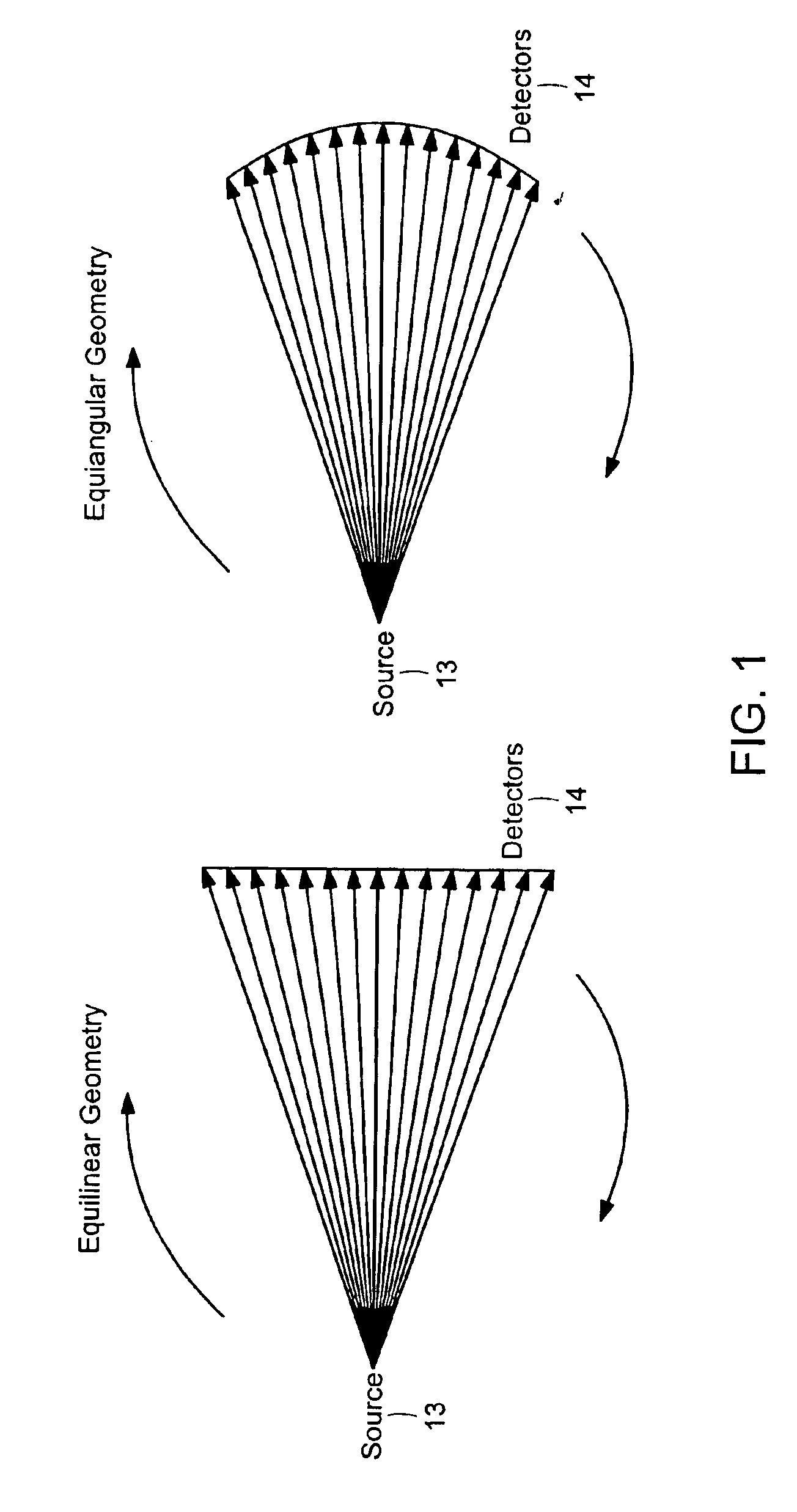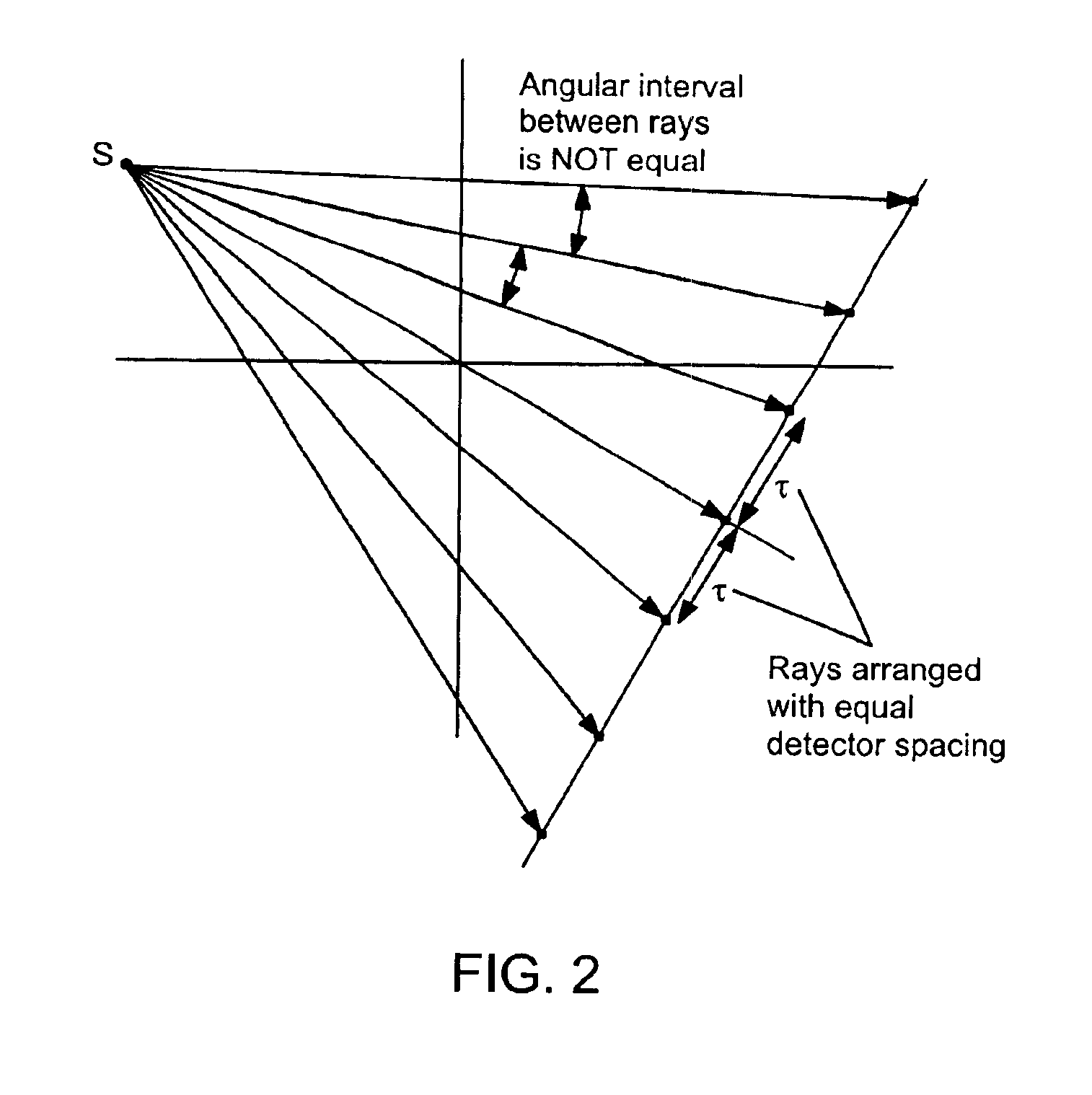Apparatus and method for reconstruction of volumetric images in a divergent scanning computed tomography system
- Summary
- Abstract
- Description
- Claims
- Application Information
AI Technical Summary
Benefits of technology
Problems solved by technology
Method used
Image
Examples
Embodiment Construction
[0028]A description of preferred embodiments of the invention follows.
[0029]Referring to FIG. 1, equilinear and equiangular detector geometries are depicted. A radiation source 13 projects radiation onto multiple one-dimensional linear or two-dimensional planar area detector arrays 14 that are angled generally along line or a circle. The detector arrays generate scan data from a plurality of diverging radiation beams, i.e., a fan beam or cone beam. The source and detectors are rotated around the object to be imaged, and a plurality of projection images is captured to computer memory for tomographic projection image processing.
[0030]In the case of an equilinear geometry, a single source produces a fan or cone beam which is read by a linear 1D or 2D array of detectors, as shown on the left. In the case of an equiangular geometry, such as shown on the right, the detectors occupy a 1D arc to image fan beam data, or a 2D cylindriacal surface to image cone beam data.
[0031]Referring to FIG...
PUM
 Login to View More
Login to View More Abstract
Description
Claims
Application Information
 Login to View More
Login to View More - R&D
- Intellectual Property
- Life Sciences
- Materials
- Tech Scout
- Unparalleled Data Quality
- Higher Quality Content
- 60% Fewer Hallucinations
Browse by: Latest US Patents, China's latest patents, Technical Efficacy Thesaurus, Application Domain, Technology Topic, Popular Technical Reports.
© 2025 PatSnap. All rights reserved.Legal|Privacy policy|Modern Slavery Act Transparency Statement|Sitemap|About US| Contact US: help@patsnap.com



